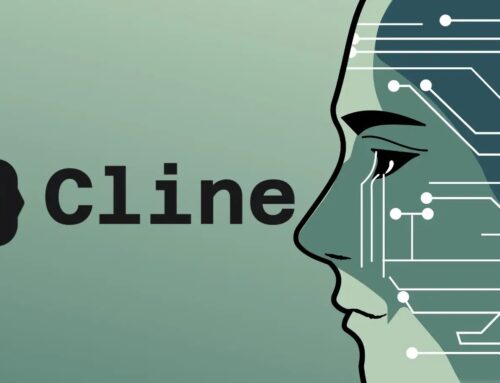
Hackers Actively Exploiting 7-Zip RCE Vulnerability in the Wild
A disturbing trend has emerged from the cybersecurity landscape: threat actors are actively exploiting a critical Remote Code Execution (RCE) vulnerability in 7-Zip, the widely-used open-source file archiver. This development puts millions of users at immediate risk, potentially leading to malware infections, data theft, and complete system compromise. Understanding the nature of this flaw and implementing prompt mitigation strategies are paramount for anyone utilizing 7-Zip.
Understanding the 7-Zip RCE Vulnerability: CVE-2025-11001
The vulnerability, officially tracked as CVE-2025-11001, stems from 7-Zip’s improper handling of symbolic links within ZIP archives. In essence, this flaw allows an attacker to construct a specially crafted ZIP file that, when extracted by a vulnerable version of 7-Zip, can escape its intended directory. This “directory traversal” capability is the foundation for the Remote Code Execution. By manipulating symbolic links, an attacker can trick 7-Zip into writing malicious files to arbitrary locations on a user’s system, ultimately facilitating the execution of arbitrary code.
The implications of such an RCE are severe. Once arbitrary code can be executed, an attacker gains significant control over the compromised system. This could range from installing ransomware or spyware to establishing persistent backdoors for ongoing access, exfiltrating sensitive data, or even using the compromised machine as a pivot point for further attacks within a network.
How the Exploitation Works
The exploitation chain for CVE-2025-11001 typically begins with a user downloading and attempting to extract a malicious ZIP archive. The attacker crafts this archive to contain symbolic links that point outside the expected extraction directory. When 7-Zip processes these links, it inadvertently writes attacker-controlled files (which could be executables, scripts, or library replacements) to sensitive system locations. Once placed, these malicious files can then be triggered to execute, achieving the RCE. This entire process can occur with minimal user interaction beyond the initial extraction attempt, making it a highly effective attack vector.
Who is at Risk?
Any individual or organization using 7-Zip is potentially at risk, especially those who frequently download and extract archives from untrusted sources. This includes:
- General Users: Those who download files, software, or media that come in ZIP archive formats.
- IT Professionals and Developers: Individuals handling large numbers of compressed files, open-source projects, or system backups.
- Organizations and Enterprises: Companies where 7-Zip is deployed across numerous workstations, creating a broad attack surface.
The widespread adoption of 7-Zip means that the potential impact of this vulnerability is significant, affecting millions globally.
Remediation Actions
Given the active exploitation of CVE-2025-11001, immediate action is crucial to secure your systems. The following steps should be implemented without delay:
- Update 7-Zip Immediately: The primary and most effective remediation is to update to the latest patched version of 7-Zip. Ensure you are downloading updates from the official 7-Zip website to avoid malicious lookalikes.
- Exercise Caution with Untrusted Archives: Be extremely wary of ZIP archives from unknown or suspicious sources. Avoid extracting files from email attachments unless you can verify the sender and the content.
- Implement Endpoint Detection and Response (EDR): EDR solutions can help detect and block post-exploitation activities, even if an initial compromise occurs.
- Regular Backups: Maintain regular, secure backups of critical data. In the event of a successful compromise, this can significantly reduce data loss and recovery time.
- User Education: Educate users about the risks associated with suspicious attachments and downloads. The human element often remains the weakest link in the security chain.
Detection and Mitigation Tools
While updating 7-Zip is paramount, several tools can assist in detecting malicious activities or enhancing overall system security against such threats:
| Tool Name | Purpose | Link |
|---|---|---|
| Official 7-Zip Website | Download the latest patched version of 7-Zip to fix the vulnerability. | https://www.7-zip.org/ |
| VirusTotal | Upload suspicious files (including ZIP archives) for analysis by multiple antivirus engines. | https://www.virustotal.com/ |
| Sysmon | Windows system service that monitors and logs system activity, helping detect malicious process creation or file writes. | Sysinternals Sysmon |
| Threat Intelligence Platforms | Provide up-to-date information on active threats, indicators of compromise (IOCs), and attack vectors. | (Refer to your organization’s chosen TI platform) |
Protecting Your Digital Assets
The active exploitation of CVE-2025-11001 in 7-Zip underscores the constant need for vigilance and proactive security measures. Remote Code Execution vulnerabilities are among the most critical threats, offering attackers direct pathways to system control. Promptly patching your 7-Zip installations and adopting a heightened level of skepticism towards untrusted archives are essential steps to protect your digital assets. Stay informed, stay vigilant, and prioritize software updates to maintain a robust security posture against evolving cyber threats.





